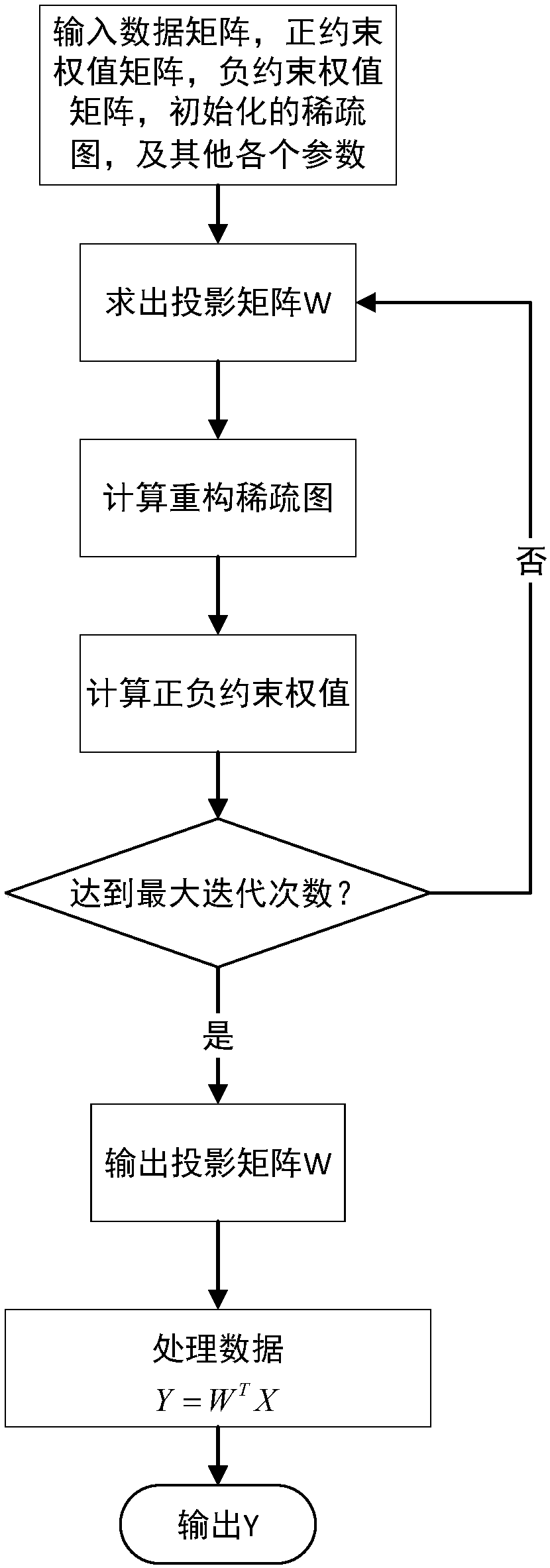Probability pairwise constraint-based self adaptive semi-supervised dimensionality reduction method
An adaptive, semi-supervised technology, applied in the fields of instruments, character and pattern recognition, computer parts, etc., can solve the problems of inability to cope with different data, difficult to obtain labels, inconvenient application, etc., to improve the accuracy of weight distribution, The effect of a wide range of applications and great promotion value
- Summary
- Abstract
- Description
- Claims
- Application Information
AI Technical Summary
Problems solved by technology
Method used
Image
Examples
Embodiment 1
[0044] An adaptive semi-supervised dimensionality reduction method based on probabilistic pair constraints, including the following steps:
[0045] (1) Constraint definition: First, pair constraints are modeled so that each constraint has a weight. Each constraint is treated differently based on the information it contains, rather than being considered to be of equal importance.
[0046] In order to limit the weight of the constraint, the definition of probability is adopted here, and the weight of each positive constraint is regarded as a probability (from the perspective of probability, the weight of the constraint is explained, and the constraint weight is given a probabilistic nature) , the sum of the probabilities of the constraints in the positive constraint set is 1, and the negative constraints are also handled in this way.
[0047] The sum of the probabilities (weights) belonging to the same type of constraints is 1, and the quadratic programming algorithm is used to...
PUM
 Login to View More
Login to View More Abstract
Description
Claims
Application Information
 Login to View More
Login to View More - R&D
- Intellectual Property
- Life Sciences
- Materials
- Tech Scout
- Unparalleled Data Quality
- Higher Quality Content
- 60% Fewer Hallucinations
Browse by: Latest US Patents, China's latest patents, Technical Efficacy Thesaurus, Application Domain, Technology Topic, Popular Technical Reports.
© 2025 PatSnap. All rights reserved.Legal|Privacy policy|Modern Slavery Act Transparency Statement|Sitemap|About US| Contact US: help@patsnap.com



